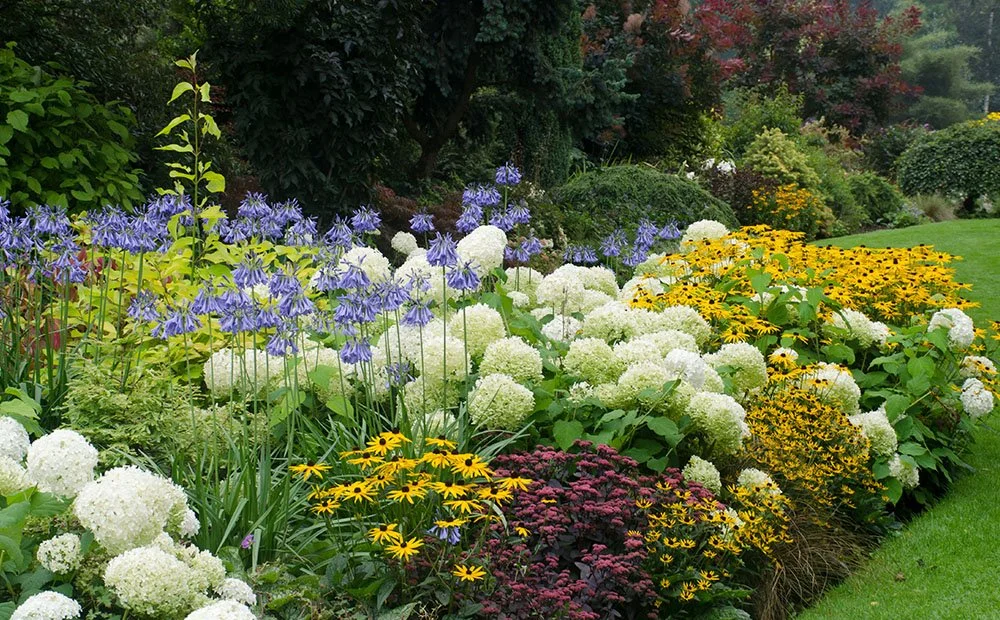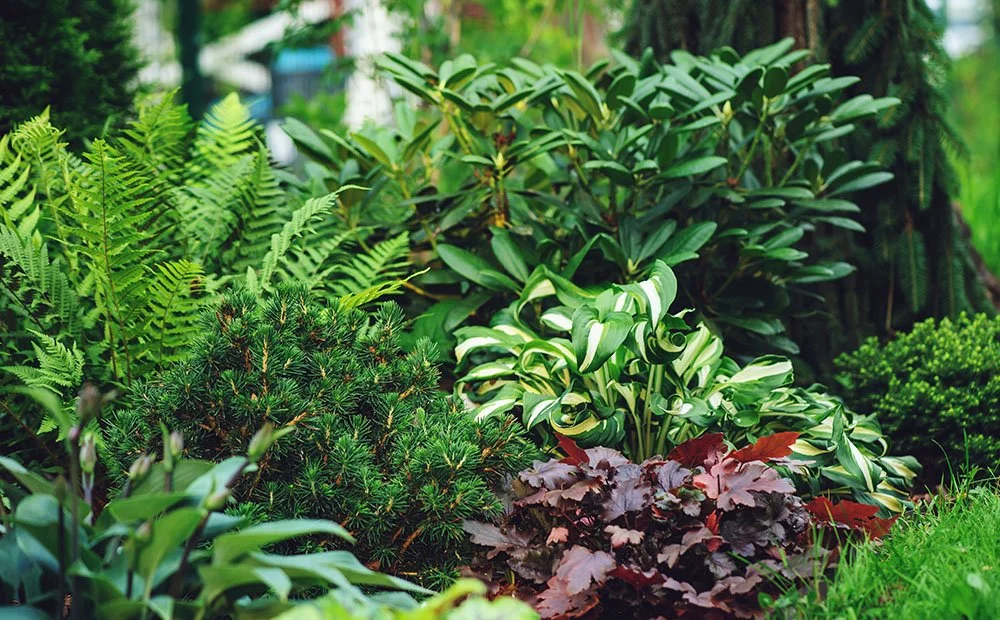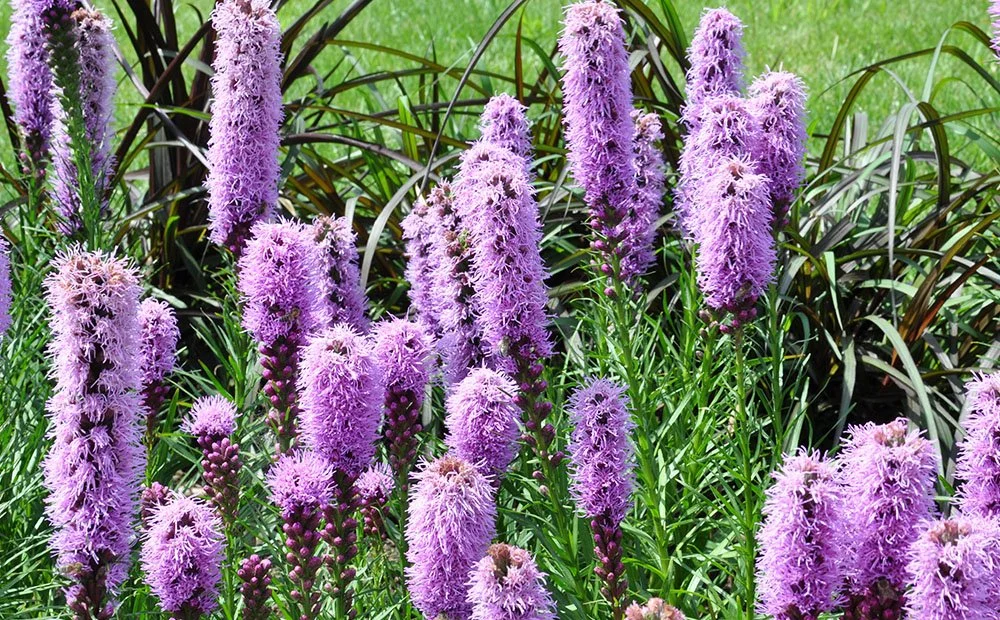IDEAS FOR PLANNING A NEW LANDSCAPE
Perennials are at the heart of any new landscape. But when you’re shopping at the garden center, it can be daunting to know where to begin and what to choose. Here are five combinations to get your plans in motion!
Coneflower, Bee Balm, and Coreopsis
We love a dazzling combination of summer flowers. Start your summer showstoppers off with the daisy-like blooms of coneflower in June, followed by bee balm and coreopsis in early summer. The bright pink, violet, or orange flowers of the bee balm and coneflower pair beautifully with the yellow coreopsis. They’ll attract your admiration and be a paradise for the pollinators. Although bee balm fades away in late summer, the coneflower and coreopsis keep flowering into the fall.
Hosta, Fern, and Coral Bell
A classic combination for any shady spot in the garden is hosta, fern, and coral bell. The fern gives you the feeling of an old-growth forest, while the hosta carries thick green, blue, or variegated yellow leaves. Meanwhile, the coral bell brings a splash of pink, purple, or even burgundy leaves, depending on the variety. These plants don’t need blooms to transform a dim landscape into a vibrant perennial garden. When the hostas and coral bells do flower, you’ll see bright hues of white and pink.
Iris, Daylily, and Peony
Are you going for the timeless look of a cottage garden? Or maybe you want a border of big bright blossoms? Whatever you desire, these three perennials will provide abundant flowers to the garden in the spring.
Daylilies reach their peak output in June, giving you new blooms daily. Iris’ open their beautifully sculpted flowers sometime in the spring or early summer (depending on the variety), while peonies’ big blossoms burst open in the mid-to-late spring in Indiana. Orange daylilies pair wonderfully well with classic pink peonies and white and blue bearded iris’. As a group, they’ll turn your perennial landscape into a frolicking riot of flowers every spring.
Aster, Black-Eyed Susan, and Cardinal Flower
Whoever thought spring was the primary time for flowers hasn’t discovered this summer combination! In early summer, this trio steps into the spotlight as the red cardinal flowers and yellow black-eyed Susans start blooming. In the late summer, they reach their full beauty as the asters join the show with violet-blue flowers.
The cardinal flowers peak in mid-to-late summer before fading away, while the asters and black-eyed Susans continue to bloom right into the fall. This trio will keep your pollinators well-fed through the end of the growing season. You might even see more hummingbirds in your landscape thanks to the cardinal flower too!
Catmint, Blazing Star, and Rose
Roses are so beautiful that they hardly need companions but still benefit from supporting actors. Growing catmint around the base beautifully covers their stems and brings a cool-blue complement to blazing red or pink roses. But why stop with catmint?
Blazing stars bring a different look to the scene altogether. With their finely textured leaves, they help the catmint cover the base of the roses. Plus, they unfurl bright towers of pink flowers in mid-summer, making this trio a real family of complementary shapes and sizes. Catmint is known to repel pests that may attack roses as an additional benefit. Plus, who could ever resist the relaxing minty fragrance that it brings to your landscape?
These are five perennial combinations that you can start with, but there’s no reason to stop here. Experiment with your combinations by choosing pleasing flower combinations, contrasting textures, and complimentary leaf colors. When designing your own combinations, keep in mind that your perennials will do best when their light and water needs are similar.
For more ideas on planning a new landscape, visit our garden center in person! We’d love to recommend more combinations and make sure you’re ready for planting.






